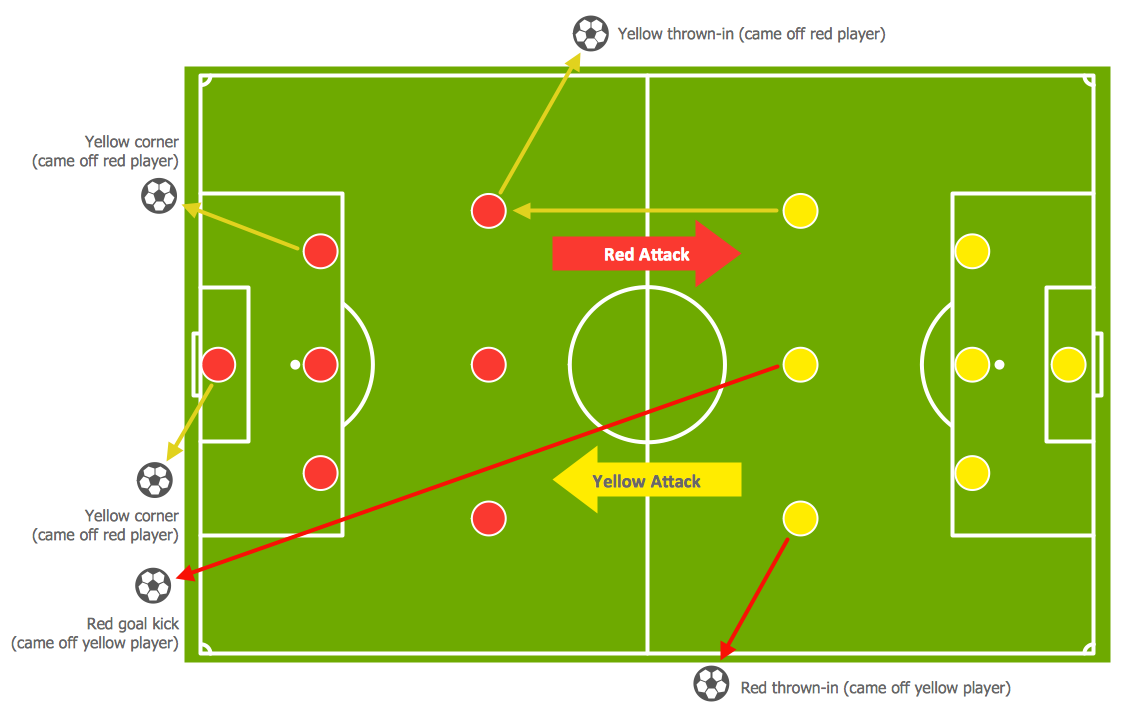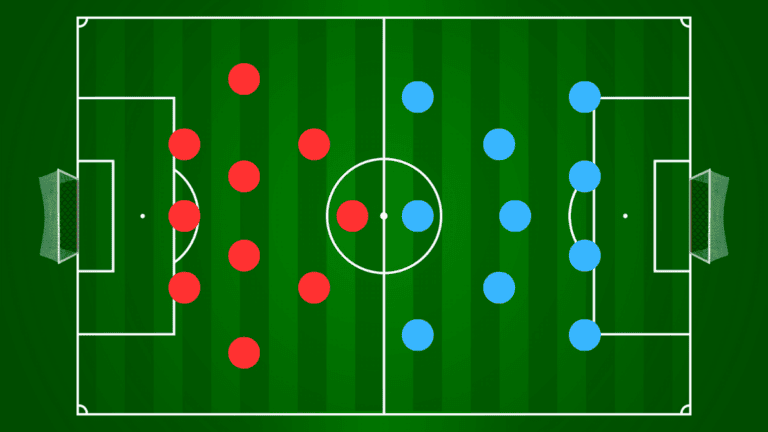“Football Tactics Popular in France
Related Articles Football Tactics Popular in France
Football Tactics Popular in France

France, a nation steeped in footballing history, has consistently produced world-class players and teams. Behind this success lies a rich tactical landscape that has evolved over time. French football tactics are characterized by a blend of defensive solidity, tactical flexibility, and an emphasis on individual flair. Here’s a closer look at some of the popular football tactics in France:
1. The 4-2-3-1 Formation
The 4-2-3-1 formation is one of the most widely used and successful tactics in French football. It provides a balance between defensive stability and attacking prowess. The formation typically consists of four defenders, two holding midfielders, three attacking midfielders, and a lone striker.
- Defensive Solidity: The two holding midfielders shield the defense, breaking up opposition attacks and providing cover for the full-backs.
- Attacking Flexibility: The three attacking midfielders can interchange positions, creating overloads and exploiting space in the opposition defense.
- Lone Striker: The lone striker leads the line, holding up the ball and bringing the attacking midfielders into play.
Example: The French national team under Didier Deschamps has frequently used the 4-2-3-1 formation with great success, winning the 2018 FIFA World Cup and reaching the final of Euro 2016.
2. The 4-3-3 Formation
The 4-3-3 formation is a more attacking-minded tactic that emphasizes width and creativity. It typically consists of four defenders, three central midfielders, and three forwards.
- Width and Pace: The two wingers provide width and pace, stretching the opposition defense and creating opportunities for crosses and cut-backs.
- Midfield Dominance: The three central midfielders control the midfield, dictating the tempo of the game and providing support for both the defense and attack.
- Attacking Trio: The three forwards work together to create goal-scoring opportunities, with the central striker leading the line and the wingers cutting inside to support.

Example: Olympique Lyonnais, during their dominant era in the 2000s, often employed a 4-3-3 formation, showcasing their attacking talent and ability to control matches.
3. The 3-5-2 Formation
The 3-5-2 formation is a more defensive tactic that emphasizes solidity at the back and quick transitions. It typically consists of three central defenders, two wing-backs, three central midfielders, and two strikers.
- Defensive Strength: The three central defenders provide a strong defensive base, making it difficult for the opposition to break through.
- Wing-Backs: The wing-backs provide width and support in both defense and attack, tracking back to defend and pushing forward to create overloads.
- Midfield Control: The three central midfielders control the midfield, dictating the tempo of the game and providing support for both the defense and attack.
- Striking Partnership: The two strikers work together to create goal-scoring opportunities, with one striker dropping deep to link up with the midfield and the other striker running in behind the defense.
Example: Some Ligue 1 teams have experimented with the 3-5-2 formation to provide defensive stability and exploit the pace of their wing-backs.
4. Counter-Attacking Football
Counter-attacking football is a tactic that emphasizes defensive solidity and quick transitions from defense to attack. French teams are known for their ability to defend deep and then launch rapid counter-attacks, exploiting the pace and skill of their attacking players.
- Defensive Organization: Teams that employ counter-attacking football are typically well-organized defensively, with players disciplined and committed to their defensive duties.
- Quick Transitions: The key to successful counter-attacking football is the ability to transition quickly from defense to attack, with players making quick passes and runs to exploit space in the opposition defense.
- Pace and Skill: Counter-attacking teams often rely on players with pace and skill to lead the attack, with these players able to dribble past defenders and create goal-scoring opportunities.
Example: Many French teams, particularly those with less financial resources, adopt a counter-attacking approach when playing against stronger opponents.
5. High Pressing
High pressing is a tactic that involves pressing the opposition high up the pitch, trying to win the ball back in their own half. French teams are increasingly adopting this tactic, aiming to disrupt the opposition’s build-up play and create goal-scoring opportunities.
- Intense Pressure: High pressing requires players to work hard and press the opposition with intensity, forcing them into mistakes and turnovers.
- Coordination: High pressing requires good coordination between players, with everyone working together to close down space and prevent the opposition from playing out from the back.
- Fitness: High pressing is physically demanding, requiring players to be fit and able to maintain a high level of intensity throughout the game.
Example: Some of the top teams in Ligue 1, such as Paris Saint-Germain, employ high pressing tactics to dominate possession and create goal-scoring opportunities.
6. Positional Play
Positional play is a tactic that emphasizes maintaining possession of the ball and creating space through intelligent movement and passing. French teams are increasingly adopting this tactic, aiming to control games and create goal-scoring opportunities.
- Possession-Based: Positional play is based on maintaining possession of the ball, with players making short, quick passes to keep the ball moving and create space.
- Intelligent Movement: Positional play requires players to move intelligently, creating passing lanes and exploiting space in the opposition defense.
- Patience: Positional play requires patience, with players willing to keep the ball and wait for the right opportunity to attack.
Example: Some French teams, influenced by the tactical philosophies of managers like Pep Guardiola, have adopted positional play tactics to control games and dominate possession.
7. Individual Flair
French football has always been known for its emphasis on individual flair. French players are often encouraged to express themselves on the pitch, using their skill and creativity to create goal-scoring opportunities.
- Dribbling: French players are often excellent dribblers, able to beat defenders and create space for themselves and their teammates.
- Passing: French players are often excellent passers, able to pick out teammates with accurate and incisive passes.
- Creativity: French players are often creative, able to come up with new and innovative ways to attack the opposition defense.
Example: Players like Kylian Mbappé, known for their pace, dribbling, and finishing ability, exemplify the emphasis on individual flair in French football.
Conclusion
French football tactics are characterized by a blend of defensive solidity, tactical flexibility, and an emphasis on individual flair. The 4-2-3-1 and 4-3-3 formations are two of the most popular tactics, providing a balance between defense and attack. Counter-attacking football and high pressing are also increasingly popular, as teams look to exploit the pace and skill of their attacking players and disrupt the opposition’s build-up play. Ultimately, the success of French football tactics depends on the quality of the players and the ability of the manager to implement a clear and effective game plan.
French football continues to evolve, with new tactics and strategies emerging all the time. As the game becomes more globalized, French teams are increasingly influenced by tactical trends from around the world. However, the core principles of French football – defensive solidity, tactical flexibility, and individual flair – will likely remain central to the country’s footballing identity.

